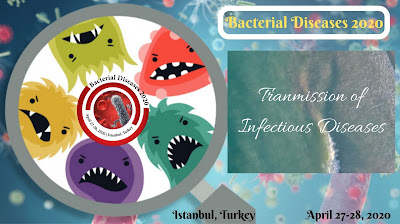Meningococcal bacterial aggregates form a thick honey-like liquid that flows through blood vessels
 A key stage in infection by Neisseria meningitis, a
human pathogen to be blamed for meningitis in infants and young adults was
unravelled by a group of scientists at the Pasteur Institute. The progression
of the infection was facilitated and aggravated by the blood aggregates formed
in the blood vessel. Though treatment is run quickly, the death rate due to
meningococcal infections remains terribly high.
A key stage in infection by Neisseria meningitis, a
human pathogen to be blamed for meningitis in infants and young adults was
unravelled by a group of scientists at the Pasteur Institute. The progression
of the infection was facilitated and aggravated by the blood aggregates formed
in the blood vessel. Though treatment is run quickly, the death rate due to
meningococcal infections remains terribly high.
Human meningococcal infectious disease is
characterised by the accumulation of bacteria in blood vessels, that fully top
off with bacterium. However the mechanisms that govern the formation of those
aggregates and also the impact of the process is still unknown. A syndicate of
scientists, intrigued by this formation of intravascular aggregates, started to
know this stage of infection, particularly its underlying physical basis. Their
findings discovered that "the microorganism aggregates fashioned by
Neisseria meningitidis appeared to be a thick liquid, like that of honey. Analysis
shows that the formation of those aggregates and their viscous properties are
important for the progression of the infection. A microorganism mutant that
forms solid instead of liquid aggregates is at a substantial disadvantage in
colonizing blood vessels.
The thick liquid nature of the aggregates depends on
a virulence issue referred to as type IV pili. These long filaments, that have
adhesive and dynamic properties, are perpetually extending and retracting at
the microorganism surface. The bacterium use type IV pili to search out
different bacterium, draw them in and briefly establish contact. Thus Aggregation
takes place as a result of intermittent method of attraction between bacteria;
in different words a relentless alternation between the presence and absence of
attraction. As well as rising our understanding of a deadly human infection,
our analysis reveals a brand new kind of active matter -- a microorganism
combination with a viscous, honey-like consistency -- supported the
intermittent engaging forces between its element elements This
multidisciplinary study was the results of shut collaboration between a
laboratory specializing in meningococcal infections and physicists.
For more details, visit: https://bacterialdiseases.infectiousconferences.com/
Contact person: Shelley walton | program manager
Email Id:infectiousdiseaes@healthconferences.org
Contact number:Tel: +1-201-380-5561
Toll
No: +44-2088190774



Comments
Post a Comment